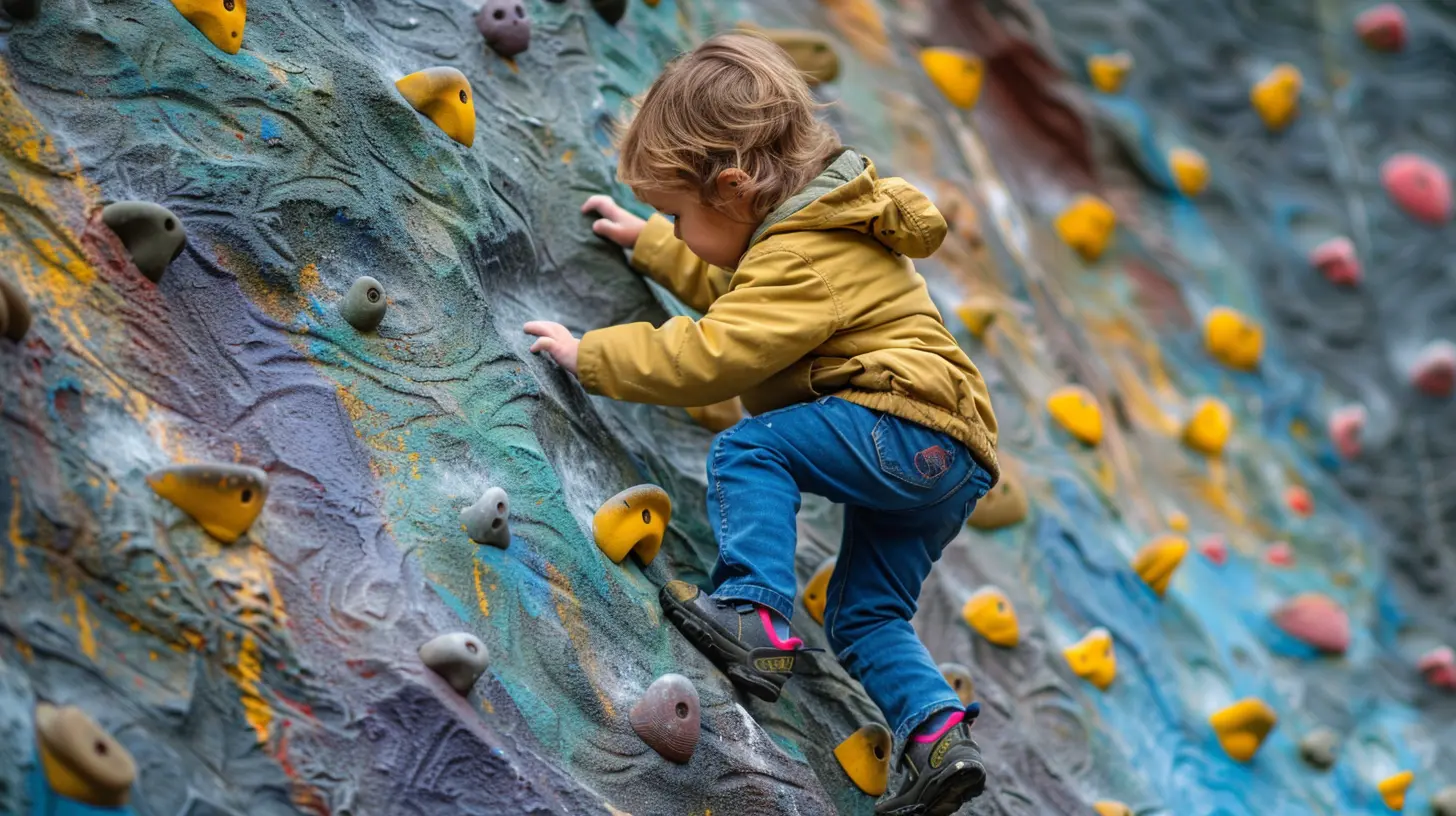Encouraging Your Child to Take Healthy Risks
28 June 2025
As parents, the word "risk" can make our stomachs churn, especially when it's connected to our kids. But, not all risks are bad — in fact, some are downright necessary. Encouraging your child to take healthy risks is one of the best gifts you can give them. It’s like handing them a toolkit filled with courage, confidence, and resilience.
Sure, you want them safe. That’s a no-brainer. But safety doesn’t mean sheltering them from every challenging situation. It means equipping them to face the world head-on — bumps, bruises, and all.
In this article, we’ll break down what healthy risks are, why they matter, and how you can guide your child toward taking brave steps without throwing them into the deep end of the pool.
What Are Healthy Risks?
Let’s start by defining what we mean by “healthy risks.” Simply put, healthy risks are age-appropriate challenges where the outcome is uncertain, but the potential for growth is high and the danger is low.Think of it this way: climbing a tree is a healthy risk; running across a highway is not.
Examples of healthy risks for kids include:
- Trying out for a school play (even if they’ve never acted before)
- Making a new friend
- Riding a bike without training wheels
- Telling a teacher they need help
- Speaking up in class
- Joining a new team or club
These activities might feel intimidating to your child, but they’re not dangerous. What they are is opportunities — opportunities for personal growth, learning, and confidence-building.
Why Are Healthy Risks Important?
Ever seen your child master something they once thought was impossible? That spark in their eyes? That’s growth in action. Healthy risks are crucial because they:- Build confidence: Every time your child takes a risk and survives (or succeeds!), they realize they’re more capable than they thought.
- Teach problem-solving: Taking risks often means navigating unexpected challenges. Great learning moments happen here.
- Encourage independence: Facing the unknown helps kids rely less on parents and more on themselves.
- Reduce fear of failure: The more your child learns that mistakes aren’t the end of the world, the less afraid they’ll be to try again.
- Prepare for real life: Life is full of unknowns. Teaching kids to take calculated risks prepares them for adulthood.
The Fear Factor: Why Kids — And Parents — Avoid Risks
Let’s be real. Risk = fear. And fear loves to whisper worst-case scenarios in our ears.Kids might stay in their comfort zones because:
- They’re afraid of looking silly or failing
- They don’t want to disappoint
- They’ve been told “no” too often
Parents, on the other hand, often discourage risk because:
- They want to protect their kids
- They’re afraid of judgment from others
- They don’t want their child to suffer emotional or physical pain
Here’s the thing: avoiding all risks doesn’t make life safer. It just makes it smaller. 
How to Encourage Healthy Risk-Taking
Okay, so you’re on board. How do you actually encourage your child to take healthy risks without scaring the life out of yourself (or them)? Here’s the game plan:1. Model It Yourself
Children are little copy machines. If they see you stepping outside your comfort zone, they’ll be more likely to do it too.Share stories of times you took a risk — maybe when you applied for a job you weren’t sure you’d get or tried something new as a hobby. Talk about how it felt, what you learned, and why it was worth it.
Even better, involve them in some of your own risk-taking. Going camping in a new place? Starting a fitness challenge? Show them that trying new things is a lifelong adventure.
2. Praise the Effort, Not Just the Outcome
If your child signs up for the science fair and doesn’t win, don’t focus on the trophy — focus on their courage.Say things like:
- "I’m proud of you for putting yourself out there!"
- "That took guts — good for you."
- "Even though it didn’t go the way you wanted, you learned something new!"
When kids realize the trying is more important than the winning, they’ll feel safer taking risks.
3. Create a Safe Space for Failure
Let’s be honest: failure stings. But it shouldn’t feel like the end of the world.Talk to your child about your own failures. Did you mess up at work? Get rejected? Miss an opportunity? Share, and normalize the idea that failure is a stepping stone, not a brick wall.
Also, resist the urge to immediately jump in and fix things. If your child messes up, let them sit with it, then help them process and figure out what comes next.
Failure is just feedback. Teach your child to listen to it — not fear it.
4. Offer Controlled Opportunities
You don’t have to toss your child into risky situations without any support. Think of yourself as the coach on the sidelines — you’re nearby, cheering, ready if they need you, but you’re not playing the game for them.Some controlled opportunities might include:
- Letting them navigate a social challenge with a peer
- Allowing them to make age-appropriate decisions on their own
- Giving them space to explore ideas, activities, or places (within safe limits)
The more they practice, the more capable they’ll feel.
5. Teach Risk Assessment
Taking risks doesn’t mean acting recklessly. Teach your child the difference between a healthy risk and a dangerous one.Guide them through questions like:
- "What’s the worst that could happen?"
- "How could you prepare or reduce that risk?"
- "What could go right?"
- "Is this safe and appropriate for you?"
This helps them build internal judgment, something they’ll need when you’re not around.
6. Celebrate Bravery
Whether they nailed the school presentation or just introduced themselves to a new kid at lunch — celebrate it!You don’t have to throw a party every time (although cupcakes help), but acknowledge the moment. Make bravery part of your family’s daily language.
“I saw you trying something new today — that was brave!”
Make it clear that you see them stepping up. That recognition goes a long way.
What If Your Child Is Super Shy or Anxious?
Some kids are naturally more cushioned in their comfort zones. And that’s okay. Risk-taking looks different for every child.For a shy or anxious child, asking a question in class might be their version of skydiving. Respect that. Start small, go slow, and celebrate every victory, no matter how minor it may seem.
Gentle encouragement is key. You don’t need to push — you need to nudge. Think of yourself as the wind beneath their wings, not the catapult.
Also, validate their fear. Don’t dismiss it. Say things like, “I know that seems scary. I’ve felt that way too. But I believe in you.”
Belief is powerful. Sometimes, that's all they need.
Common Mistakes Parents Make — And How to Avoid Them
We’ve all been there. In trying to help, we sometimes hold our kids back. Here are a few common traps to watch out for:1. Overprotecting
Hovering may feel like love, but it can lead to dependency and fear. Let them fall (safely). Let them fail. Let them figure it out.2. Rushing In
If your child encounters a problem, don’t rush to fix it. Ask leading questions instead.- "What do you think you could do?"
- "How do you want to handle it?"
Empower them to find their own solutions.
3. Using Too Much Fear-Based Language
Saying things like “Be careful, you’ll get hurt!” puts fear front and center. Instead, go with “Stay aware” or “You’ve got this, just focus.”Language shapes mindset. Choose words that build, not break.
The Long-Term Benefits of Risk-Taking
Want to raise a resilient adult? A go-getter? Someone who chases dreams and isn’t afraid to stumble along the way?Then encourage healthy risk-taking now.
Kids who grow up comfortable with healthy risks become:
- More confident in social situations
- Better problem solvers
- More emotionally resilient
- Open-minded and curious
- Less afraid of failure in school, careers, and relationships
It’s about planting seeds today that grow into sturdy, deep-rooted trees tomorrow. Risk, in this case, isn’t just a moment — it’s a mindset.
Final Thoughts
Encouraging your child to take healthy risks isn’t about pushing them off a cliff and yelling “Good luck!” It’s about walking beside them, holding their hand until they’re ready to run on their own.There will be stumbles. There may be tears. But there will also be milestones — big and small — that shape who they become.
So the next time your child hesitates at the edge of something new, resist the urge to say “no” right away. Instead, ask: “What’s the best that could happen?”
Because when kids learn to take healthy risks, they learn to live fully — not just safely.
all images in this post were generated using AI tools
Category:
Building ConfidenceAuthor:

Zelda Gill
Discussion
rate this article
1 comments
Blaine McGivern
Encouraging healthy risks empowers children to grow, learn resilience, and build confidence. Support their exploration while ensuring a safe environment, allowing them to embrace challenges and discover their potential.
June 30, 2025 at 4:23 AM

Zelda Gill
Thank you for your insightful comment! I completely agree that fostering a safe environment for healthy risks is essential for children’s growth and development.


